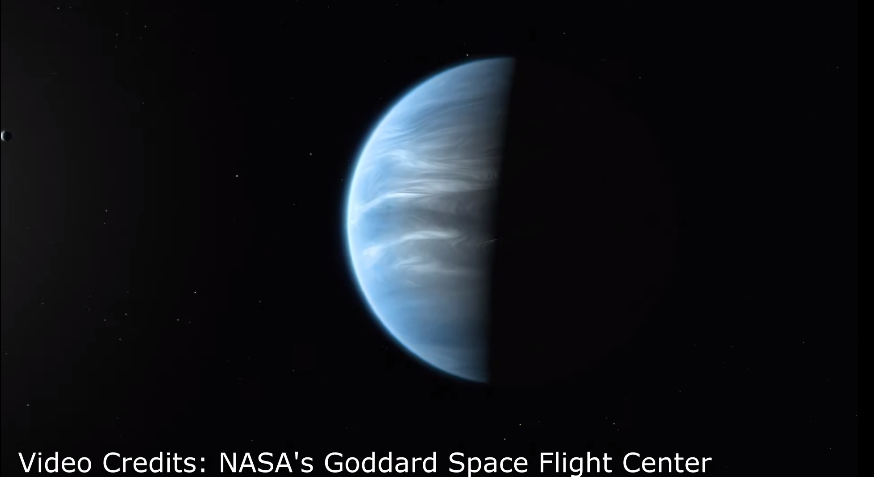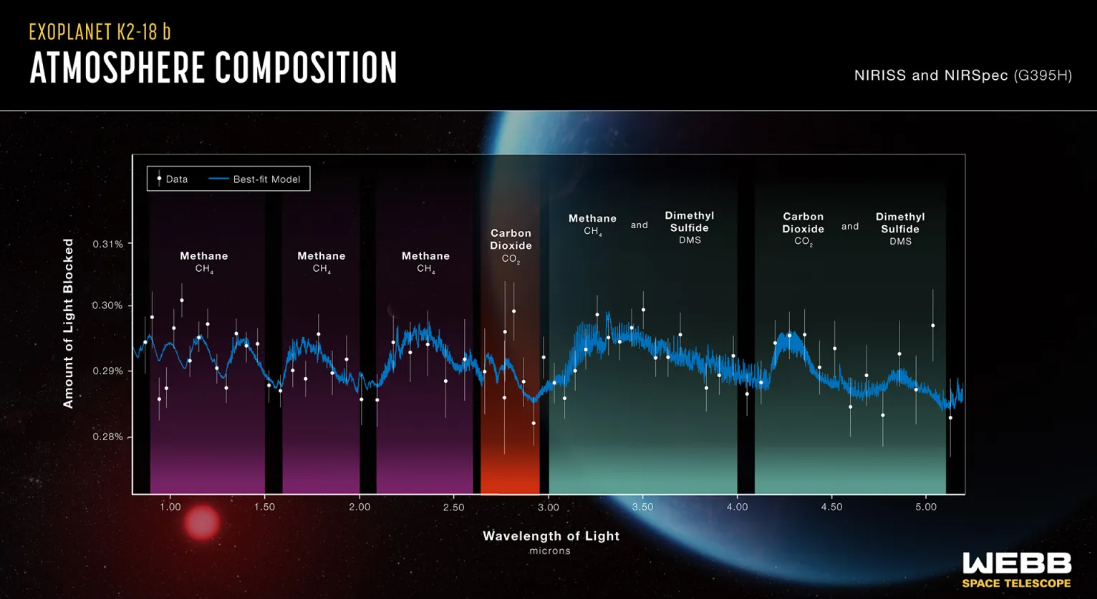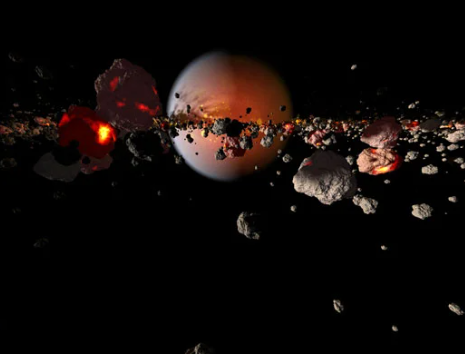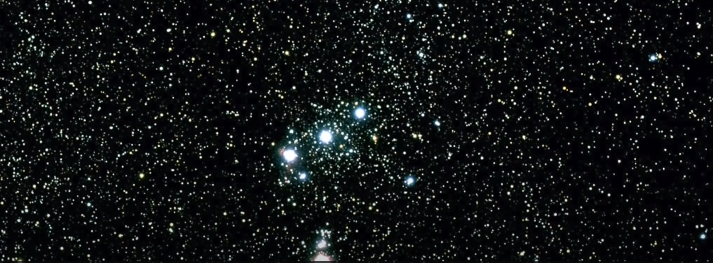Water is very important for life. That’s why when astronomers look for life in space, what they look for is water. Not long ago, astronomers discovered water in the atmosphere of a planet. This planet is so far from its star that its water can exist in liquid form.
K2-18B Water Planet
About one hundred and twenty light years away from Earth is a star named K2-18b. Astronomers call this star a red dwarf, meaning it is smaller than our Sun and slightly cooler than our Sun. Now its temperature is not even that cold, its temperature is a few thousand degrees and the temperature of our sun is about 6000 degrees.

In 2015, astronomers detected that there is a planet orbiting around this star. Astronomers call these planets Exoplanets or Extra Solar Planets. Such a planet was discovered in 1992 orbiting another solar system. More than four thousand exoplanets have been discovered so far. Now this Exoplanet around K2-18b was discovered by Eclipsing method.
Eclipsing method: This method means Such planets are quite difficult to see. The detection of any planet with the help of a Sun is called the Eclipsing Method. When the planet passes in front of this star, the sun’s light is slightly reduced, in a way it is eclipsed. So then we know that this dip is due to a planet. Now this dip in this particular system happened again after 33 days. This means that this planet takes about 33 days to orbit its Sun, compared to our own Earth taking 365.25 days to orbit its Sun.
This tells us that this planet is closer to its sun than our Earth. But K2-18b is slightly cooler than our Sun, meaning that despite being close to the planet it is, it is above a distance where water can exist in liquid form.

Astronomers call the distance at which the planet is Habitable Zone. Now that doesn’t mean that life exists at all, it just means that water can exist there in liquid form and we think that if there is water there, there might be life there.

When that planet passed in front of its sun, when it observed with a telescope how the atmosphere of that planet is absorbing the light of that star and through this, it was able to find out what is the composition of that atmosphere. So it is known that there is hydrogen in that atmosphere, which is expected, but there is also water in it. And all kinds of atoms and molecules in water are also present in that atmosphere. And the number of molecules in the atmosphere tells us what it’s made of. So it is known that there is water in the atmosphere of this planet.
Unknown Exoplanet History
This planet is about three times larger than our Earth, astronomers call this planet Super Earth. This planet is smaller than Neptune and bigger than Earth. There is no such super earth in our solar system. It is not known whether these super-Earths contain gasses like Neptune or are planets like our Earth. If it becomes like our earth, the chances of life on it will be more. Now the idea is that this planet is in the Habitable Zone, so it might have rain droplets in its atmosphere, just like it rains on Earth.
But in spite of all these, there are other problems, one of them is that this planet is very close to the Sun, so our idea is that our calculation shows that this planet will be tidily locked with its star, like the Moon is with us. It is tidily locked to the Earth, due to which we see only one side of the Moon, so this planet will also be tidily locked to its Sun, so one side of it will always be looking towards the Sun and the other away from the Sun.
That is, one will always be hot and one will always be cold. Due to which the atmosphere of this planet could not tolerate heat and cold at the same time.
Temperature: The temperature of this planet may be 0 degree to 40 degree, so there may be life there, but we cannot say anything yet.
There is another issue that the star of this planet is a red dwarf star, so the magnetic field of red dwarf star is very high, so the risk of flares is quite high. But there is also a positive point that this type of dwarf star has a very long life span, more than 100 billion years.


Very Interesting..But what about Trappist 1, it is a super earth or it’s a myth..can you tell me!
Thank You But Related Trappist 1 already uploaded (https://spacgeo.com/nasa-found-13-planets-like-earth-super-earth/)